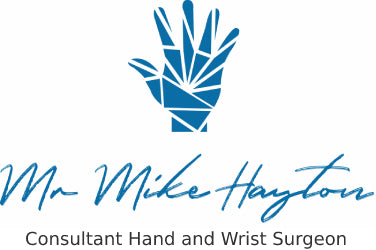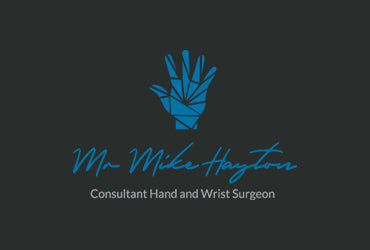Thumb MPJ injuries in athletes
Mike Hayton
Wrightington.
Thumb MPJ ligament injuries are common and the management of such injuries is based upon clinical examination of stability.
There is a wide variation of normal ROM and stability at the thumb MPJ.
It is therefore of utmost importance that both thumbs are examined to establish any asymmetry.
In general stable injuries can be treated with a removable protective thermoplastic splint while unstable injuries may require surgery.
Ultimately it is an athlete’s choice regarding management and following surgery and they need to be aware of the likely RTP.
1 Acute Ulna Collateral Ligament injuries (Skier's thumb)
Common – x10 more than RCL injury
Mechanism of injury
The thumb MPJ has a forced abduction (valgus) injury. Either thumb in opponent’s shirt, shorts or turf. Thumb injured against the ski pole or strap
Symptoms
Immediate pain – less pain with a complete rupture.
Swelling or a bump on ulna aspect of thumb MC head may indicate a Stener lesion.
Examination
Always compare with opposite side
ROM and stability varies considerably among individuals
A tender swelling or a bump on ulna aspect of thumb MC head may indicate a Stener lesion.
Asymmetric laxity of the UCL in full extension and 30 flexion
Asymmetric laxity and if full extension in the accessory collateral is thought to be injured
Investigations
X-ray Bony avulsions can be seen
USS The rupture can be seen and laxity dynamically demonstrated
Flexion of the thumb IPJ allows the experienced ultra sonographer further visualise whether a Stener lesion is present
MRI with an extremity coil – static images
Non operative management
Stable injuries can be managed non operatively in a thermoplastic splint with weekly assessment to identify late instability.
RTP in a splint immediate as pain allows
Splint can be discarded 6-8 weeks
Operative management
All acute unstable requires surgical repair with or without a suspected Stener lesion.
The Stener lesion occurs when the distally avulsed ligament retracts proximally and flips outside the adductor aponeurosis and therefore will not be able to heal back to its foot print. This is an indication for open repair.
My preferred technique is the use of two soft Biomet 1mm mini bone anchors reattaching the ligament to the footprint on the base of P2. Note the footprint is the volar ulna corner.
No K wires are used.
Return to play
RTP in my personal series in 15 consecutive elite professional athletes was 4.4 weeks in a thermoplastic splint. No re ruptures were noted and symmetrical pinch grip, ROM and Kapandji score were recorded at average 41 months’ post surgery.
2 Chronic Ulna Collateral Ligament Injuries (Game keeper's thumb)
Not as common as the acute injury
Mechanism of injury
As above
Symptoms
As above but also report instability with decrease tripod grip
Palpable Stener lesion
Examination
As above
Investigations
As above
Non operative management
If the patient can tolerate the instability, then no intervention maybe required. Need to be warmed about the risk of long term OA which may need a fusion if symptomatic.
Operative management
My referred technique is a careful dissection to try and identify and mobilise the old Stener lesion. If possible then direct repair with anchors.
Often not possible and in such cases I use a strip of tendon autograft (PL or FCR) and perform a ligament recon fixing both sides with a knotless anchor – 3.5mm SwiveLok (Arthrex)
No K wires are used unless there is volar subluxation.
3 Radial Collateral Ligament injuries
Not Common – x10 less common that UCL
Mechanism of injury
Opposite of above
Symptoms
Pain along radial side of joint
Examination
Laxity RCL
May have a prominent MC head if there is volar subluxation of the base of P2
Investigations
As above
Non operative management
If stable – splint 4-6 weeks
Operative management
If unstable may need repair using bone anchors.
If unstable and volar subluxation of the base of P2 may need additional temporary K wire across the reduced joint for 4 weeks

